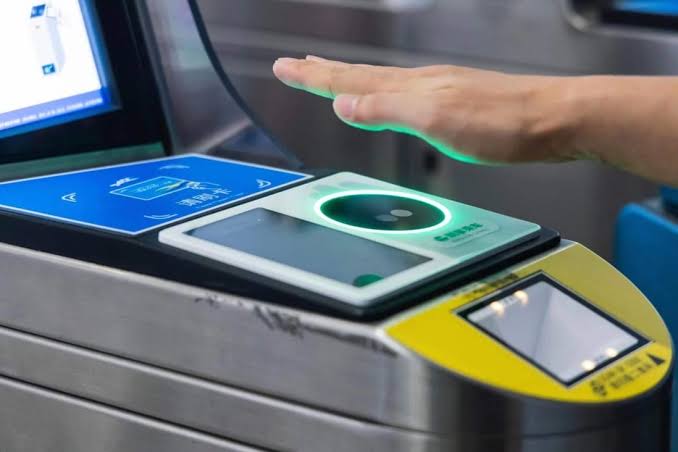How does China’s palm scan payment system work and will it grow?

A passenger is seen using a palm print reader installed at some subway stations in Beijing.
A new service allowing passengers to pay for subway rides by scanning their palms, was recently been introduced in China.
Question: What unique subway payment method was installed in China?
Answer: The new service, which allows passengers to pass through a ticket gate by holding their hand above a reader, was introduced on the subway line connecting downtown Beijing and Beijing Daxing International Airport in its suburbs in May. Commuters need to register their palm prints at a separate machine near the ticket gate beforehand, and link the information to their smartphone payment service WeChat Pay. It’s an easy process to do on the spot.
Q: Why do people have to scan the palms of their hands?
A: The system that uses a part of the body for identification is called “biometric authentication,” and people can enter some airports and apartments in China by having their face scanned. In the case of palm print recognition, the system reads not only the wrinkles on one’s hand, but also the pattern of their veins, making it easier to prevent impersonation, and is thus considered highly secure.
Q: Does everyone think it’s convenient?
A: Actually, many people are concerned about their privacy. Smartphone payments have become widespread across China including small shops, and surveillance cameras have been installed throughout cities. It makes it easy for the Chinese government and companies to collect personal information such as people’s faces, locations and shopping history. A woman in her 30s, who lives in Beijing, said, “I’m worried that even my palm is being monitored.”
Q: How far will the service become widely used in the future?
A: Some users have said it takes a long time to scan their palms, and that it is not much different from using a smartphone to pay for subway rides. Palm recognition is also being developed outside of China, and some regional banks in Japan have introduced similar services as an alternative to cash cards. However, it may be difficult for the system to become widespread unless its convenience and protection of personal information is better promoted.
The Mainichi Shimbun




